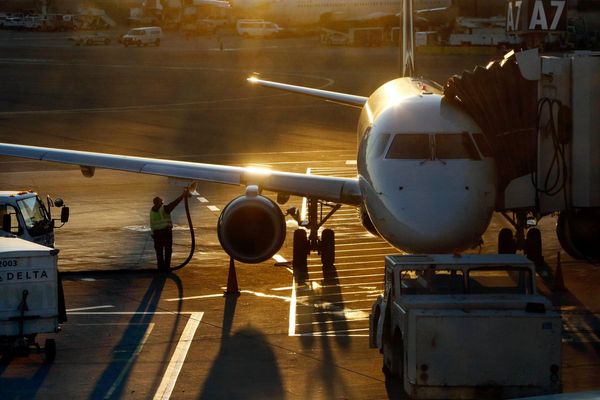
Imagine being Jerome Powell this week. On Friday, August 22, the Federal Reserve chairman will step onto the stage at the Jackson Hole Economic Policy Symposium — the most closely watched monetary retreat in the world — with markets, politicians, and even building contractors staring him down.
President Donald Trump is pressing him for interest-rate cuts. Congress is questioning Fed independence. Meanwhile, he's weathering criticism about a costly renovation of the central bank's D.C. headquarters. And hanging over it all: Trump and his allies are hyping a successor who pledges to keep cutting rates in 2026.
No pressure.
But while Powell juggles politics, markets, and Fed renovations, Jackson Hole itself offers a lens into why this remote Wyoming summit has become the epicenter of monetary policy debates — and why every word matters. From its origins and scenic setting to the historic moments that shaped global markets, here's a closer look at the questions investors and economists keep asking.
See Also: Trump Gets FAQ’d By Powell—No Champagne Rooms, Just Clearing Cancer Dust
Why Wyoming And Not Kansas?
The summit began in 1978 as a Kansas City Fed conference on agriculture. In 1982, organizers moved it to Wyoming to entice Fed Chair Paul Volcker, an avid fly fisherman. Volcker came, and prestige followed. Ever since, Jackson Hole has been the place where central bankers float new ideas, away from D.C. politics and Wall Street chatter.
As Antlers Arch puts it: “The remote, scenic setting also provides a relaxed atmosphere conducive to open discussion, away from the bustle of urban financial centers.”
Over the years, the Kansas City Fed has turned Jackson Hole into a tradition as durable as monetary policy itself.
What Were Some Historic Moments?
Jackson Hole has been a stage for major policy shifts. In 2005, IMF economist Raghuram Rajan warned that banks underestimated the risks of exotic derivatives. He famously stated, “The same way parents are asked, ‘Do you know where your children are?’, bankers nowadays are asked, ‘Do you know where your risks are held?'”
His peers dismissed him at the time, but the speech foreshadowed the 2008 crash.
Ben Bernanke, Fed Chair from 2006 to 2014, led the first so-called quantitative easing (QE1) effort in 2008 to stabilize markets after the financial crisis. Quantitative easing—where the central bank buys financial assets to inject money into the economy—was used again in QE2 in 2010 and QE3 in 2012 to sustain the recovery, support lending, prevent a deeper recession and combat deflation.
After Bernanke, Janet Yellen assumed the role in 2014. In 2017, she emphasized that the U.S. financial system had become more resilient since the 2008 crisis, having reduced the system's vulnerability to “shocks” without unduly limiting credit or economic growth.
Powell, since becoming Fed Chair in 2018, has faced a series of major challenges, from late-cycle market volatility and pre-pandemic rate hikes to the COVID-19 crisis and post-pandemic inflation surges. He noted in 2024 that inflation “eased substantially” from 7% to 2.7%, but was “still too high.” That hasn’t changed under Trump, regardless of the number of firing threats Powell receives. (Legally, a U.S. president cannot fire the Fed chair.)
Why Does It Matter So Much?
Because Jackson Hole isn't just about theory. It's where central bankers preview the policies that ripple across global markets. A single sentence can send bond yields spiking, stocks tumbling, or currencies swinging. Investors, economists, and politicians hang on every word, reading between the lines for hints of what's next.
Recall 2022 when Powell discussed the “pain” households and businesses would feel in order to reduce inflation. The S&P 500 fell 12% in the month that followed, according to Reuters. Usually, the month that followed each of Powell’s last seven Jackson Hole speeches, the S&P 500 has fallen nearly 2% on average.
Meanwhile, the 10-year Treasury yield spiked by an average of 21 bps and the dollar has risen 1.4% over the same period.
What's At Stake This Year?
This year, the spotlight on Powell is even brighter. Inflation remains sticky, and markets are eager for clarity on potential rate cuts. At the same time, speculation swirls over Fed independence under a MAGA-aligned administration. Private equity and credit markets are particularly eager for cuts, hoping to reignite dealmaking.
Whether Powell delivers soothing words or maintains caution, the speech will be highly scrutinized. And though he may be a "lame duck" Fed chair, Jackson Hole remains his forum — and he can still ruffle some feathers.
Now Read:
Image: Shutterstock







